As a passionate ceramic enthusiast, I understand the importance of using the right glue for your projects. The right adhesive ensures a strong bond, longevity, and a flawless finish.
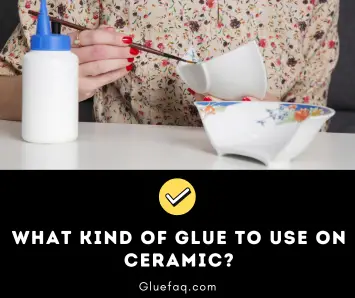
In this comprehensive guide, we’ll explore different types of glues specifically designed for ceramics.
Whether you’re a beginner or an experienced artist, this article will help you make informed decisions and elevate your ceramic creations to new heights.
The Best Glues for Ceramic
We conducted experiments using different types of superglues and epoxies on commonly used ceramics found in homes, such as stoneware, porcelain, and earthenware.
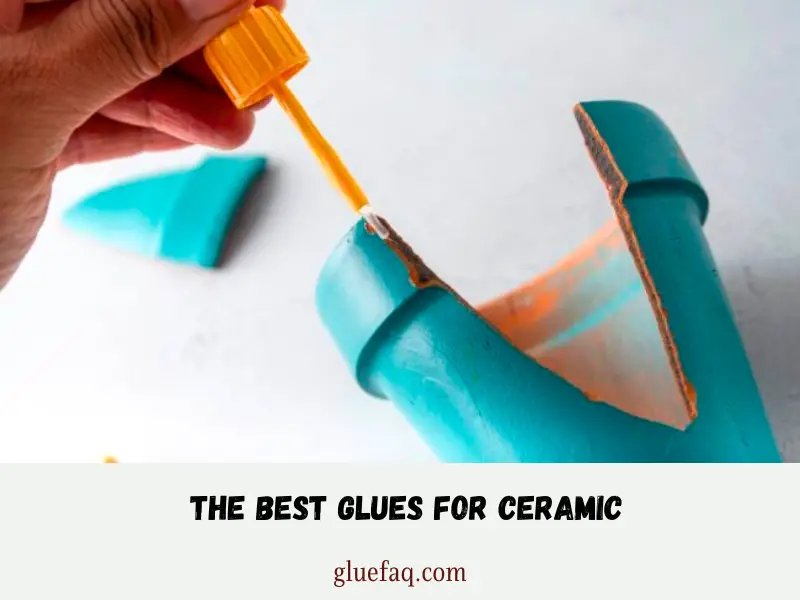
Our goal was to assess how easy they were to apply, their drying times, and the color of the finish once cured. This guide will help you find the best ceramic glues available so that you can keep them in your tool kit or utility drawer.
1-Gorilla Super Glue Brush & Nozzle
Gorilla Super Glue gel is an excellent choice for fixing ceramics, and it’s especially great for general repairs.
It has a special formula with rubber particles that make it really strong and resistant to impacts. Not only can you use this Gorilla Glue on ceramics, but it also works well on plastic, metal, stone, fabric, paper, and rubber, among other materials.

The best part is that it dries in less than 45 seconds, and once it’s dry, it becomes clear, making your repairs practically invisible.
Pros
- The gel formula is designed to be easily visible when dispensed, making it easier to control and ensure accuracy.
- There are two applicator options included: a brush and a nozzle.
- This adhesive bonds almost instantly, allowing for quick and convenient repairs on various surfaces.
Cons
- Using the nozzle applicator can be challenging at first and may require practice for some people.
- When using the brush, the rim of the container can get messy, and sometimes the top might stick to the rim when closing it.
- The product has a strong smell when wet, so if you’re using a lot of it, it’s recommended to wear a mask.
2-Krazy Glue Home & Office Brush-On Glue
If you need a glue that is both quick and strong but doesn’t cost a lot, you should check out Krazy Glue Home & Office Brush-On Glue.

It works really well on ceramics, metal, vinyl, plastic, and wood, and it sticks things together right away. The glue comes with a brush that’s easy to use and covers things nicely, even in small areas.
The bottle is designed to prevent the glue from drying out and the brush from getting stuck together.
Pros
- This product dries really fast, so it fixes things quickly and easily.
- You don’t need to use a lot because a small amount goes a long way and will last a long time.
- The brush that comes with it is easy to use, even if you’ve never used it before.
- It makes things stick together really well and will last a long time, even on ceramics and other materials.
Cons
- The glue sets very quickly, so if you accidentally apply it to your skin, it will stick right away.
- The glue has a thin consistency, which can make it hard to see when applying, and this might be challenging for some users.
3-J-B Weld 50112 ClearWeld Epoxy
J-B Weld ClearWeld Quick-Setting Epoxy is a special glue that can stick things together really well. It works on lots of different materials like ceramic, glass, wood, and plastic.
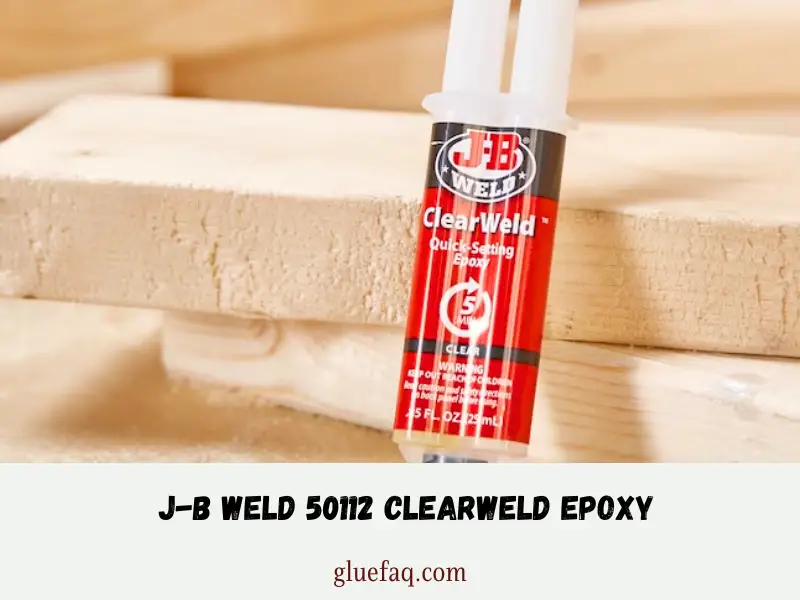
It’s super strong and lasts a long time. It’s even stronger than most other glues you might use, which usually have a strength of 500 to 2,000 pounds per square inch. But this epoxy has a strength of 3,900 pounds per square inch, which is a lot stronger!
Pros
- This product is really strong and sticks well to many different surfaces for a long time.
- It doesn’t take much time to dry completely, so you can fix things quickly.
- The applicator looks like a syringe and is easy to use, making it accurate.
- The cap is designed to prevent clogs and waste, so you can use it again and store it safely.
Cons
- When gluing ceramics, it may be necessary to clamp or hold the items in place.
- The tray and wooden craft stick can only be used one time.
4-All-Purpose Silicone Adhesive Sealant
No need to worry if you spill milk or break your dishes! DAP Silicone Adhesive Sealant is a great option to safely fix your favorite mug, plate, or anything you use for food and drinks.
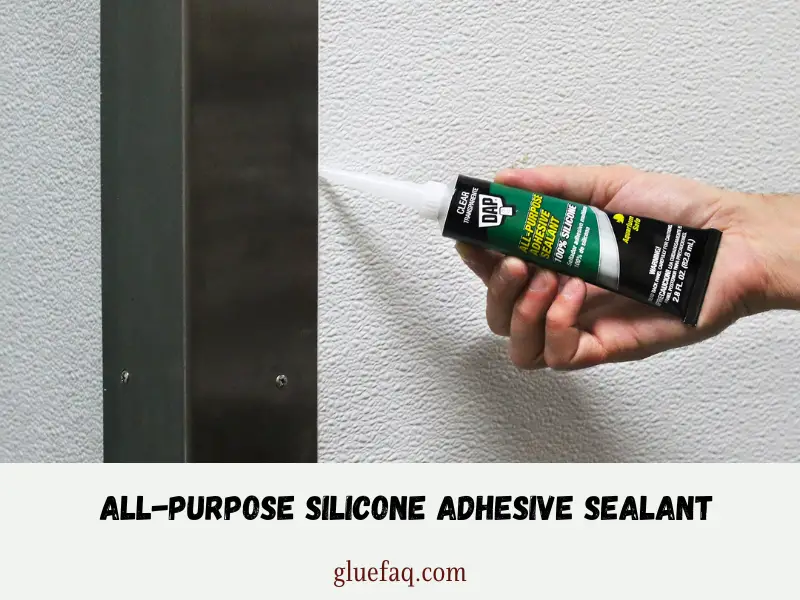
DAP is a popular brand known for making strong adhesives that are safe to use. People often use their adhesives in schools, workshops, and offices.
Pros
- You can put these in the dishwasher and microwave because they are safe to use with them.
- They are not harmful and won’t make your food unsafe to eat.
- You can use them on things like glass and ceramics.
- They also work well on fish tanks and bowls because they stick well and won’t get ruined by water.
Cons
- It might be difficult to control how much glue comes out while you’re using it.
5-Pratley Quickset White Epoxy Glue
If you need a really strong glue that dries quickly, you might want to try Pratley Quickset White Epoxy Glue. It’s great for sticking things together and filling in holes, cracks, and gaps.
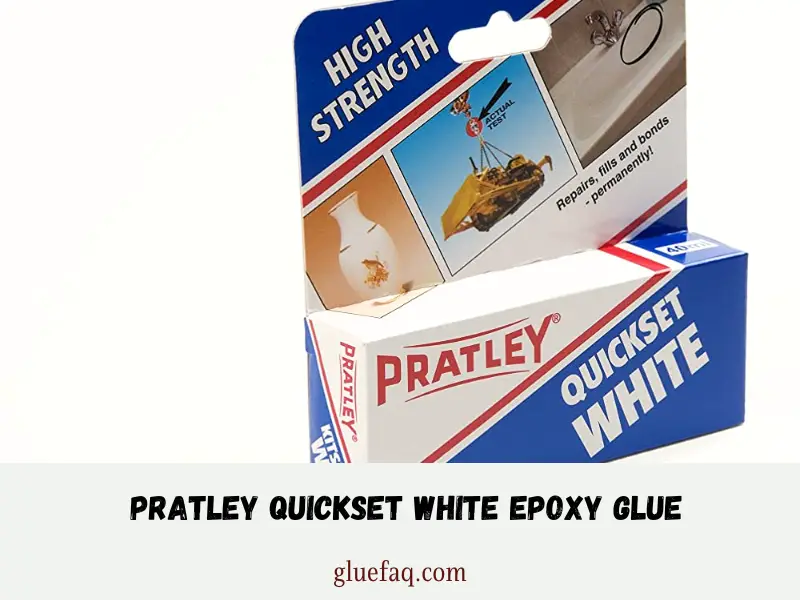
You can use it on rough, hard surfaces that are painted, like ceramics. It’s also super strong, so it’s perfect for fixing sinks and working with materials like stone, concrete, glass, fiberglass, and metal.
Pros
- The tube is easy to squeeze, so you can dispense and mix small amounts easily.
- It bonds fast but still allows you to make precise adjustments for up to 15 minutes.
- It’s very strong and sticks well to porous surfaces and ceramics, filling in gaps nicely.
Cons
- After you apply it, there is a strong smell that stays for a while.
- Make sure to apply it in a place with good air flow.
- You have to clean up any extra right away before it dries, which can be a bit difficult for some people.
- It’s not a good idea to use it on ceramics that are not white because it might be visible on darker patterns or colors.
Factors to Consider when Choosing Glue
Many things, like the way the glue is made, how it’s applied, and how long it takes to dry, can all influence how well it fixes a ceramic object. Keep reading to find out what you should think about before buying a new ceramic glue.
Bond Strength
- The strength that holds: Unleash the importance of considering bond strength for ceramic projects and enjoy projects that stand the test of time.
- Determining your needs: Understand how to assess the required bond strength for different ceramic applications and make the right glue recommendations.
- Embrace the power: Engage in emotional bonding with your ceramic projects, knowing you’ve chosen the glue that offers the desired bond strength.
Drying Time
- Timing is everything: Explore the impact of drying time on ceramic bonding and unlock the secrets to timely and efficient projects.
- Race against time: Discover considerations for projects with time-sensitive requirements and choose glues with drying times that suit your needs.
- Quick and reliable: Enjoy the convenience of glues with varying drying times, ensuring your ceramic creations come to life in record time.
Water Resistance
- Defying water’s power: Embrace the significance of water resistance for ceramic applications and create projects that can withstand moisture.
- Immunity to water: Evaluate glues based on their water resistance properties and choose the ones that offer the protection your ceramics deserve.
- Emotional resilience: Free yourself from worries about water damage, knowing your ceramic projects are sealed with water-resistant glue.
Temperature Resistance
- Battling the elements: Understand the role of temperature resistance in ceramic bonding and safeguard your creations against extreme temperatures.
- The heat is on: Identify suitable glues for high-temperature ceramic projects, ensuring your art survives even the hottest environments.
- Stay cool, stay strong: Avoid glues that fail under temperature pressure, preserving the beauty and integrity of your temperature-sensitive ceramic applications.
Translucency and Color
- Beauty in transparency: Unveil the importance of translucency and color when choosing glue, unlocking a world of visual possibilities for your ceramics.
- Colors that speak volumes: Consider factors for transparent and color-sensitive ceramic projects, ensuring your glue choice complements your artistic vision.
- Emotionally captivating: Allow your emotions to flourish as you discover glue options that provide the desired translucency and color effects, breathing life into your ceramic masterpieces.
Toxicity and Safety
- Safe creativity: Engage in the discussion on the safety considerations when using glue on ceramics, prioritizing your health and well-being.
- Assessing the risks: Evaluate glues based on their toxicity levels and embrace the necessary safety precautions, giving you peace of mind during your artistic journey.
- Non-toxic, non-compromising: Delight in the recommendations for non-toxic and safe glues for ceramic projects, allowing you to create without compromising your health.
Read: Top 9 Best Glue for Ceramic
How To Prepare Ceramic Surfaces for Gluing
1. Surface Cleaning
A clean canvas: Uncover the importance of properly cleaning ceramic surfaces before gluing and laying the foundation for strong bonds.
Cleaning made easy: Follow our recommended cleaning methods for different types of ceramics, ensuring a pristine surface for your gluing endeavors.
Spotless and flawless: Take precautions while cleaning ceramic surfaces, guaranteeing a smooth journey towards perfect ceramic bonding.
2. Surface Roughening
The art of roughening: Embrace the benefits of roughening ceramic surfaces for better adhesion and unlock the secret to unbreakable bonds.
Smooth, yet rough: Master the techniques for safely roughening ceramic surfaces, ensuring optimal glue adhesion without compromising the beauty of your ceramics.
Embrace the textured path: Weigh the factors when deciding to roughen ceramic surfaces, knowing that a textured surface can lead to breathtaking results.
3. Surface Priming
Priming for perfection: Understand the role of primers in ceramic gluing and take your bonding to new levels of excellence.
The right primer for the job: Explore different types of primers suitable for ceramic bonding and learn their application methods, elevating your ceramic projects to professional standards.
Preparing for success: Follow our guidelines for applying primer on ceramic surfaces, ensuring a flawless foundation for your adhesive of choice.
FAQs About What Kind Of Glue To Use On Ceramic?
Yes, but just as long as the glue has FDA approval.
Loctite Super Glue Liquid Precision is the best glue for repairing broken ceramics.Loctite Super Glue Liquid Precision is the best glue for repairing broken ceramics.
To fix broken parts, you can use glue or sticky stuff called epoxy. Put the glue on the edges of the broken pieces and hold them together until they stick firmly. After that, wait for the time mentioned on the package for it to dry before using it.
Yes, when it comes to fixing ceramic items, the brand that is often recommended is Gorilla Super Glue.
Final Words
In conclusion, selecting the right glue for ceramic projects is a crucial step toward achieving outstanding results.
By understanding the different types of glues available and considering factors such as bond strength, drying time, water and temperature resistance, translucency, and safety, you can make informed decisions that will enhance your ceramic creations.
Remember to properly prepare your ceramic surfaces through cleaning, roughening, and priming, and overcome any common gluing issues with troubleshooting tips and additional techniques.
With the knowledge gained from this guide, let your imagination soar as you embark on a rewarding journey of ceramic artistry.

